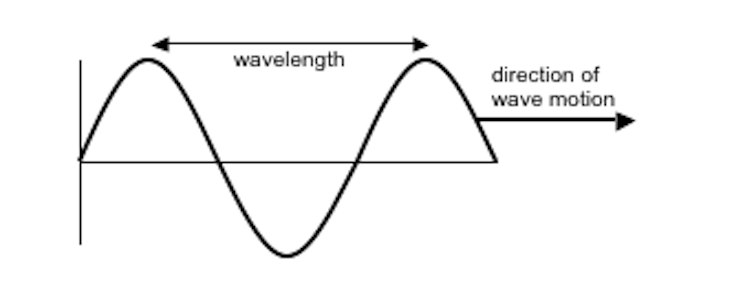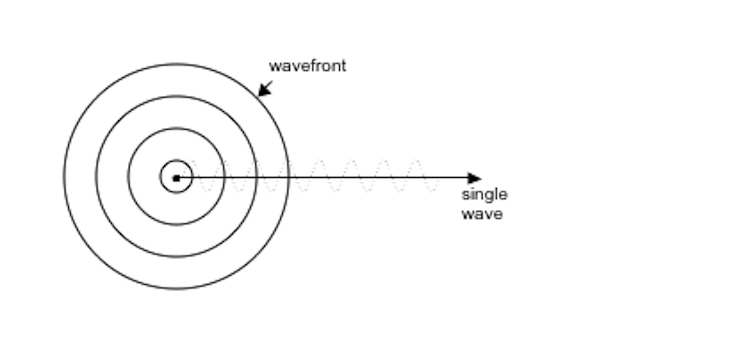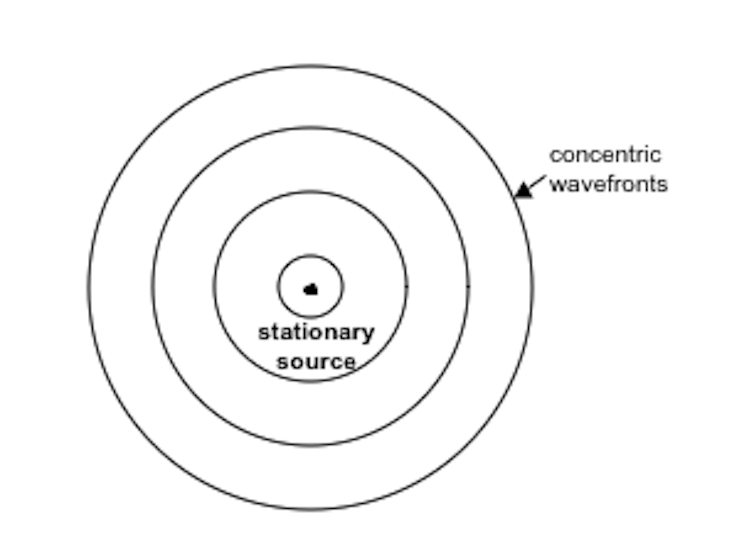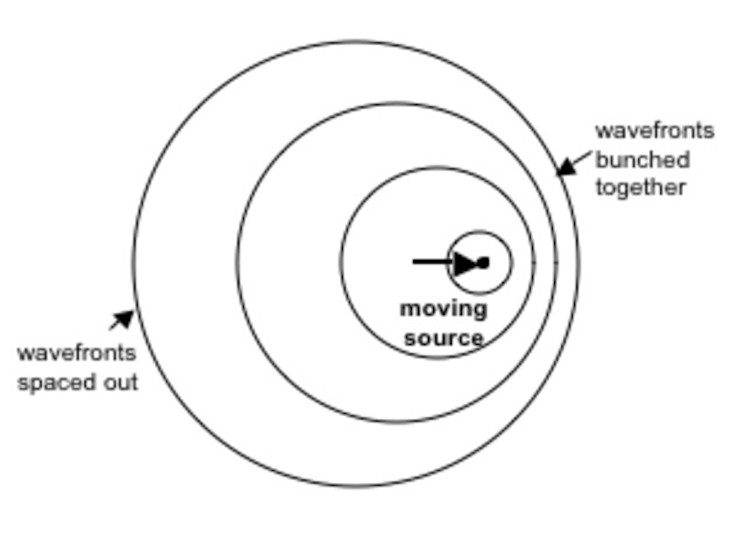When an ambulance passes with its siren blaring, you hear the pitch of the siren change: as it approaches, the siren’s pitch sounds higher than when it is moving away from you. This change is a common physical demonstration of the Doppler effect.
The Doppler effect describes the change in the observed frequency of a wave when there is relative motion between the wave source and the observer. It was first proposed in 1842 by Austrian mathematician and physicist Christian Johann Doppler. While observing distant stars, Doppler described how the colour of starlight changed with the movement of the star.
To explain why the Doppler effect occurs, we need to start with a few basic features of wave motion. Waves come in a variety of forms: ripples on the surface of a pond, sounds (as with the siren above), light, and earthquake tremors all exhibit periodic wave motion.
Two of the common characteristics used to describe all types of wave motion are wavelength and [frequency](http://encyclopedia2.thefreedictionary.com/Frequency+(wave+motion). If you consider the wave to have peaks and troughs, the wavelength is the distance between consecutive peaks and the frequency is the count of the number of peaks that pass a reference point in a given time period.

When we need to think about how waves travel in two- or three-dimensional space we use the term wavefront to describe the linking of all the common points of the wave.
So the linking of all of the wave peaks that come from the point where a pebble is dropped in a pond would create a series of circular wavefronts (ripples) when viewed from above.

Consider a stationary source that’s emitting waves in all directions with a constant frequency. The shape of the wavefronts coming from the source is described by a series of concentric, evenly-spaced “shells”. Any person standing still near the source will encounter each wavefront with the same frequency that it was emitted.

But if the wave source moves, the pattern of wavefronts will look different. In the time between one wave peak being emitted and the next, the source will have moved so that the shells will no longer be concentric. The wavefronts will bunch up (get closer together) in front of the source as it travels and will be spaced out (further apart) behind it.
Now a person standing still in front of the moving source will observe a higher frequency than before as the source travels towards them. Conversely, someone behind the source will observe a lower frequency of wave peaks as the source travels away from it.

This shows how the motion of a source affects the frequency experienced by a stationary observer. A similar change in observed frequency occurs if the source is still and the observer is moving towards or away from it.
In fact, any relative motion between the two will cause a Doppler shift/ effect in the frequency observed.
So why do we hear a change in pitch for passing sirens? The pitch we hear depends on the frequency of the sound wave. A high frequency corresponds to a high pitch. So while the siren produces waves of constant frequency, as it approaches us the observed frequency increases and our ear hears a higher pitch.
After it has passed us and is moving away, the observed frequency and pitch drop. The true pitch of the siren is somewhere between the pitch we hear as it approaches us, and the pitch we hear as it speeds away.

For light waves, the frequency determines the colour we see. The highest frequencies of light are at the blue end of the visible spectrum; the lowest frequencies appear at the red end of this spectrum.
If stars and galaxies are travelling away from us, the apparent frequency of the light they emit decreases and their colour will move towards the red end of the spectrum. This is known as red-shifting.
A star travelling towards us will appear blue-shifted (higher frequency). This phenomenon was what first led Christian Doppler to document his eponymous effect, and ultimately allowed Edwin Hubble in 1929 to propose that the universe was expanding when he observed that all galaxies appeared to be red-shifted (i.e. moving away from us and each other).
The Doppler effect has many other interesting applications beyond sound effects and astronomy. A Doppler radar uses reflected microwaves to determine the speed of distant moving objects. It does this by sending out waves with a particular frequency, and then analysing the reflected wave for frequency changes.
It is applied in weather observation to characterise cloud movement and weather patterns, and has other applications in aviation and radiology. It’s even used in police speed detectors, which are essentially small Doppler radar units.
Medical imaging also makes use of the Doppler effect to monitor blood flow through vessels in the body. Doppler ultrasound uses high frequency sound waves and lets us measure the speed and direction of blood flow to provide information on blood clots, blocked arteries and cardiac function in adults and developing fetuses.
Our understanding of the Doppler effect has allowed us to learn more about the universe we are part of, measure the world around us and look inside our own bodies. Future development of this knowledge – including how to reverse the Doppler effect – could lead to technology once only read about in science-fiction novels, such as invisibility cloaks.
See more Explainer articles on The Conversation.

